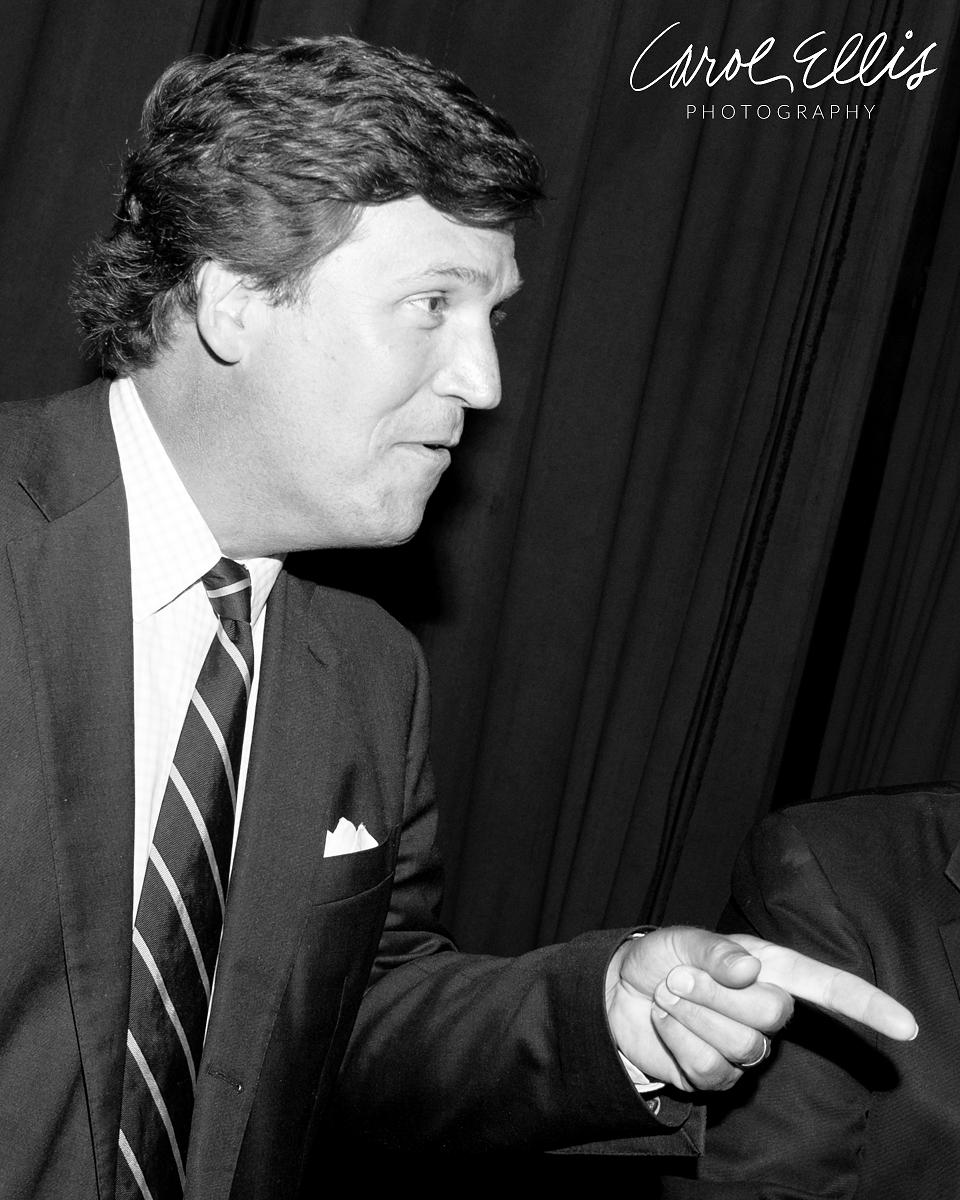|
We were backstage during a meet and greet when Tucker Carlson, turned his attention from the guests, toward me, the photog whose job it is to remain invisible, and suddenly wasn’t. “Is your camera shooting film?” he asks.
His incredulous stare at my trusty Nikon, portended a “Tucker Carlson Tonight” style debate on the merits of film versus digital; after a pause, he continues, “Naw, it’s digital,” he then shook my hand. An absurd query today, fewer than 20 years ago it was a moral question: the superiority of film and darkroom chemistry vs the immediate gratification of pixels and algorithms. Do they even sell film? Say “sell film” quickly three times and it starts to sound like “cell phone”. If camera phones outsell cameras at a ratio of 10:1, does it mean 90% of the people are using their phone as a camera? Film was mysterious; latent images appeared in the darkroom hours, days and even years after the film was exposed. Conversely, it’s not uncommon to see digital images of an event posted on the web in real time. With film the print was always part of the process. It’s often said a picture is only as good as the paper it’s printed on. No one throws away a photograph, but how many times have you lost an image in the maze of computer upgrades and digital disasters? Assuming good fortune, you locate the image file, but now must try your luck with the dozens of computer cables, USB’s and obsolete connectors needed to get it off the device. Film photography was never about quantity, it was more about a decisive moment and hours of contemplation. No, it’s not a perfect world, and who has time to wait? With digital there’s the concept of “do-over” where you can fix it in Photoshop. Similarly, there was manipulation with analog film, however, it was an art performed by a practiced eye. Legendary film photographers Ansel Adams and Paul Caponigro would pre-flash their film; before the photo session, they’d subject their unexposed film to an overall exposure of light. Adams found this methodology enhanced the detail in the shadows; similarly Caponigro loaded his film magazines in moonlight, to add density to lighter tones. “It is hard to accept defeat, especially when a possible fine image is concerned. But defeat comes occasionally to all photographers, as to all politicians, and there is no use moaning about it,” Adams wrote concerning an elusive photograph, otherwise perfect, but for one element which was off or missing. Television videographers use filters to soften facial features and add pleasing colors, to improve the viewer’s experience. Rather like when our eyesight and focus soften with age; it’s our creator’s design for filtering defects in our world. Soft filter, facelift and a tummy tuck are in the toolbox of the digital artist; so too, content manipulation. Family photo sessions became a lot less stressful knowing that precious, pouty Johnny’s head could be replaced with a happier version. With great power, comes even greater temptation. Let’s try to keep it real. Accompanying photo taken of Tucker Carlson backstage. Full disclosure: he was not pointing at my Nikon. But he does do that a lot.
1 Comment
Nan rohan
3/27/2019 08:06:32 am
Nicely done Carol. Film and dark rooms were equally exciting to the photographer as digital is now . Just a different pace.
Reply
Leave a Reply. |
CAROL ELLIS
This photographic website provides me the opportunity for self-expression, for sharing Archives
May 2024
TAGS
All
|
© Copyright 2022. Carol Ellis Photography.
All Rights Reserved.



 RSS Feed
RSS Feed
